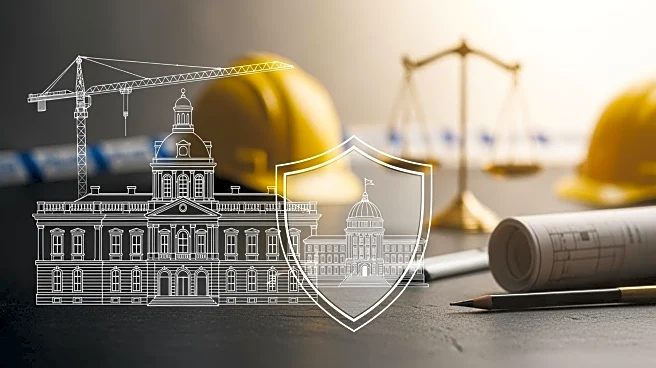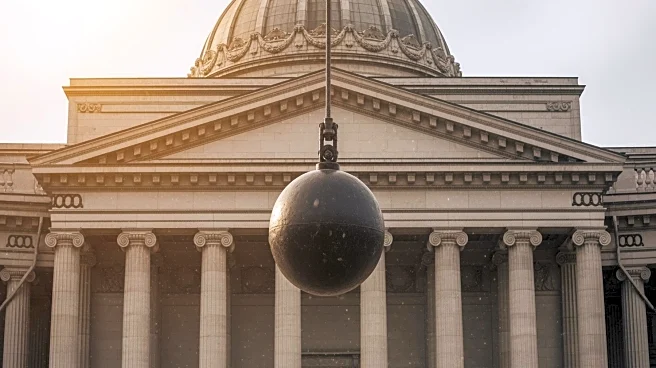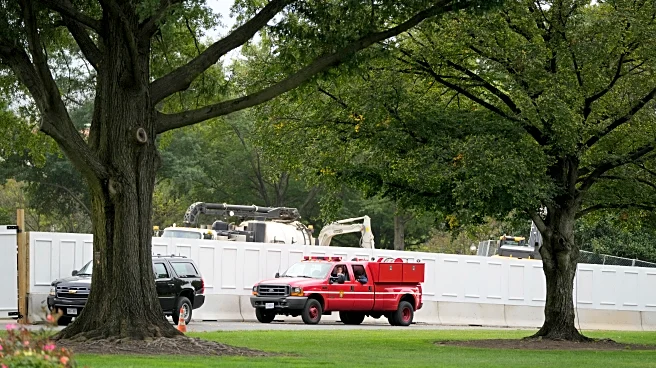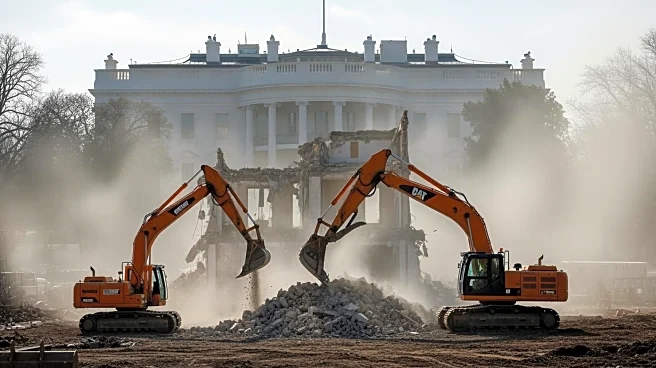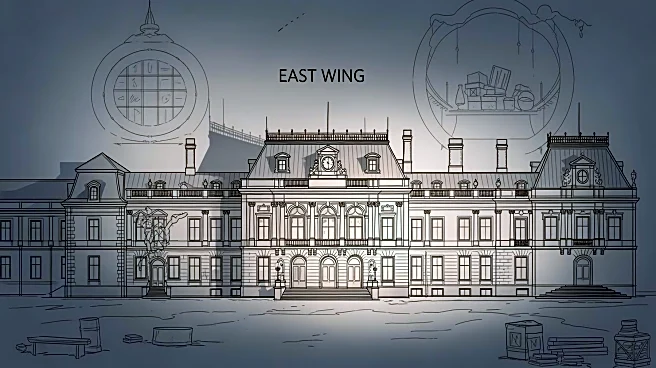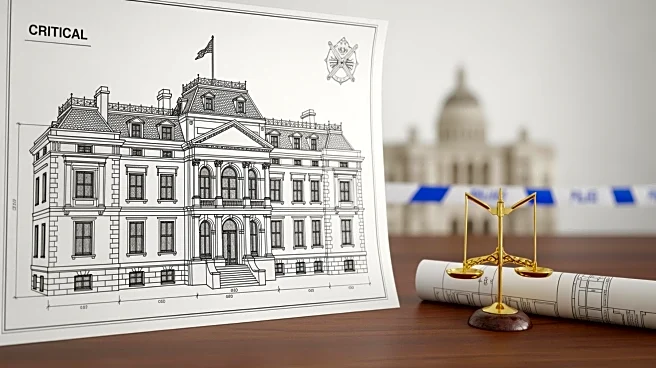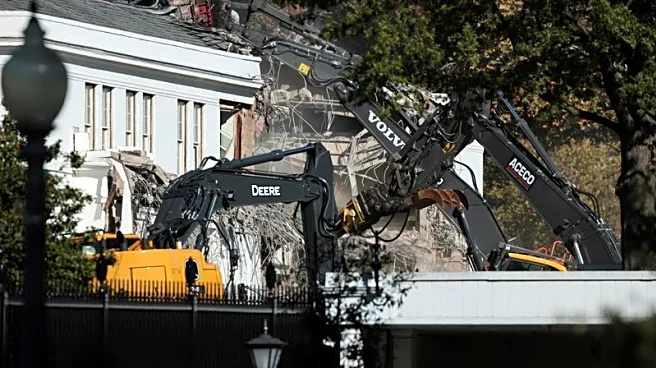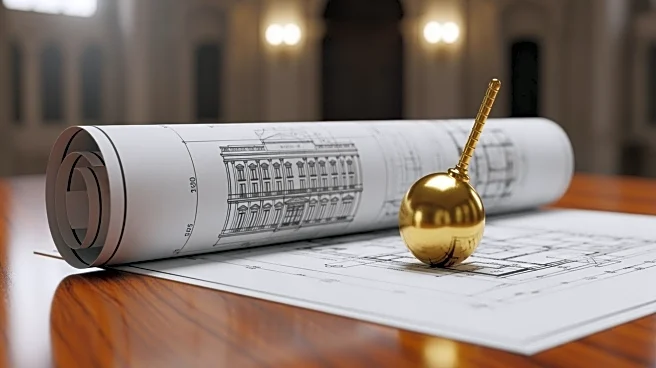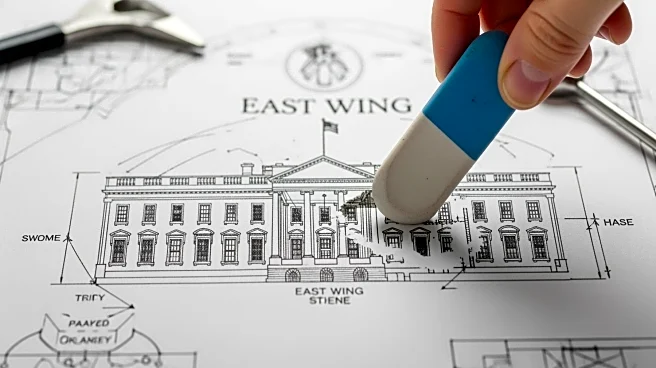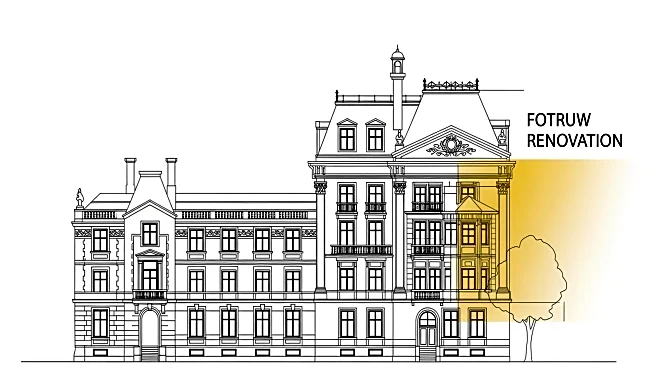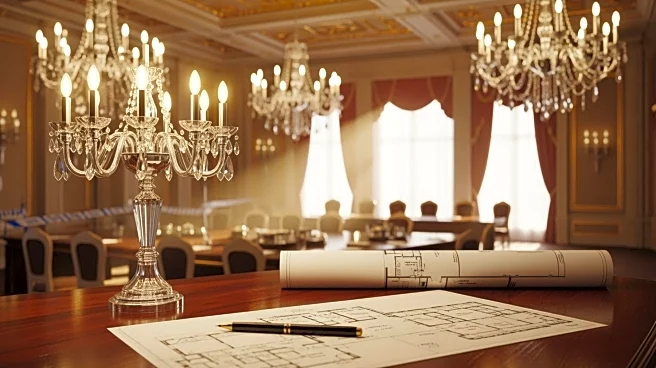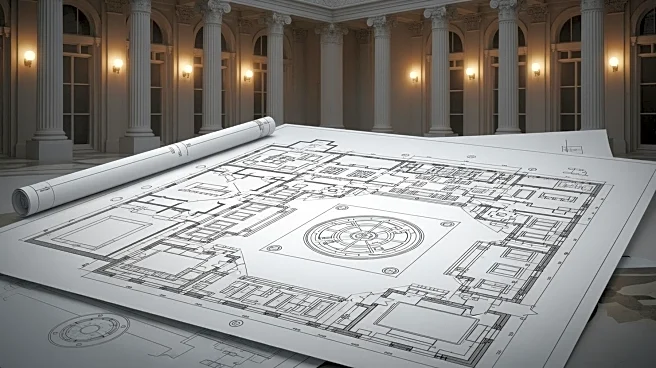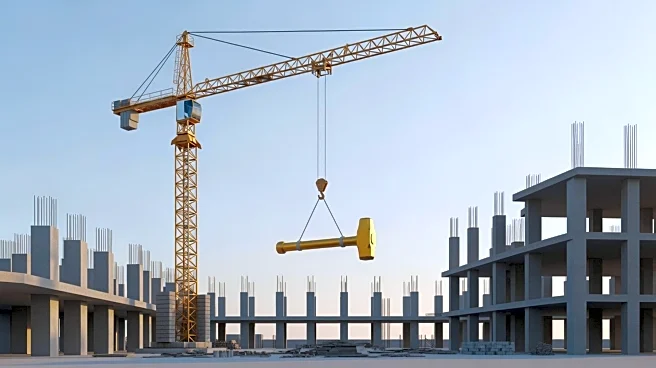What's Happening?
The National Trust for Historic Preservation has called on the Trump administration to pause the demolition of the East Wing of the White House. This request is made in light of plans to construct a new ballroom, which the Trust believes could overwhelm
the existing structure. The letter, addressed to the National Capital Planning Commission, National Park Service, and Commission of Fine Arts, emphasizes the need for the proposed ballroom to undergo legally required public review processes. Concerns have also been raised by the Society of Architectural Historians and the American Institute of Architects regarding the scale and impact of the 90,000-square-foot addition. Despite these concerns, the White House has not responded directly but has dismissed the criticism as 'manufactured outrage' from 'unhinged leftists.'
Why It's Important?
The construction of a new ballroom at the White House has significant implications for historic preservation and architectural integrity. The addition could alter the iconic landscape of the White House, raising concerns among preservationists and architects about maintaining the balance and harmony of the existing structure. The debate highlights the tension between modernization efforts and the preservation of historical sites. If the construction proceeds without thorough review, it could set a precedent for future alterations to national landmarks, impacting how such projects are managed and reviewed. The outcome of this situation could influence public policy regarding historic preservation and federal construction projects.
What's Next?
The next steps involve potential public consultations and reviews by the National Capital Planning Commission and the Commission of Fine Arts. These processes could lead to modifications in the design or scale of the proposed ballroom. Stakeholders, including preservation groups and architectural societies, may continue to advocate for a pause in construction until these reviews are completed. The Trump administration's response to these calls for review will be crucial in determining the project's future. Additionally, public opinion and media coverage may influence the administration's decision-making process.
Beyond the Headlines
The controversy surrounding the White House ballroom construction reflects broader issues in historic preservation and federal oversight. It raises questions about the balance between modernization and maintaining historical integrity. The situation also underscores the role of public and expert input in government projects, highlighting the importance of transparency and accountability. Long-term, this could lead to changes in how federal construction projects are planned and executed, potentially affecting future administrations and their approach to renovations of historic sites.
